Earth Day and Sand Dams: Restoring our Earth
This year’s global Earth Day theme is “Restore our Earth,” both a command and an answer if one were to ask, “What can we as a global community do in the face of the climate crisis?”
At The Water Project, the teams we work with in southeast Kenya respond to this question every day. Their answer? Sand dams.
Sand dams are human-made reinforced concrete structures placed across seasonal riverbeds at critical points. Sand dams are meant not to hold back water directly, but sand, which helps store water beneath it and protects it from evaporation. As the river water naturally flows over the dam each rainy season, the walls retain sand and silt, which, in turn, hold more water than the riverbed could on its own.
The sand retained behind the dam helps raise the water table in the immediate area, meaning wells built in the same community fill with water at shallower and more consistent levels. The entire landscape around sand dams also benefits, changing dry and sandy riverbanks to lush spaces full of plants and animals that mutually thrive in the wetter environment.
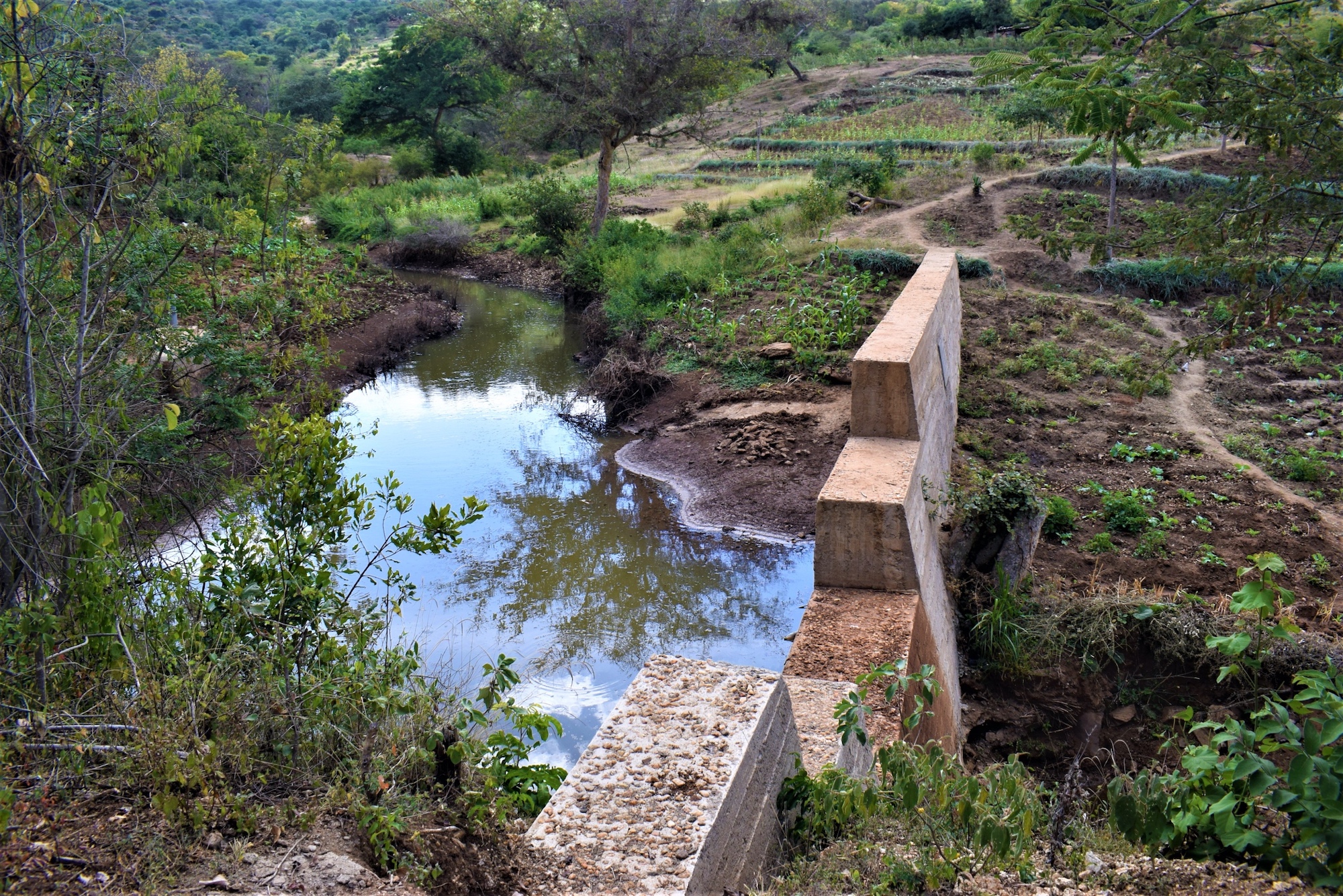
Water retained by a sand dam and the fertile environment it supports.
In a 2016 study published in Regional Environmental Change, researchers found that after comparing sites with and without sand dams, “the results show that vegetation biomass was consistently and significantly higher at sand dam sites during periods of extended droughts. It is also shown that vegetation at sand dam sites recovers more quickly from drought.”
As global warming continues to increase the severity of all weather patterns, including droughts, sand dams prove to be key tools to help combat these changes while simultaneously increasing communities’ climate resilience, soil conservation, food security, and economic stability through the opportunities sand dam landscapes and year-round water create.
Building sand dams takes an incredible amount of labor and dedication from the people who live in the communities that depend on them. Materials collection can take up to four months, and construction can last for a month, with group members working six days a week, in addition to their regular work and responsibilities. But the benefits, community members say, are worth it.
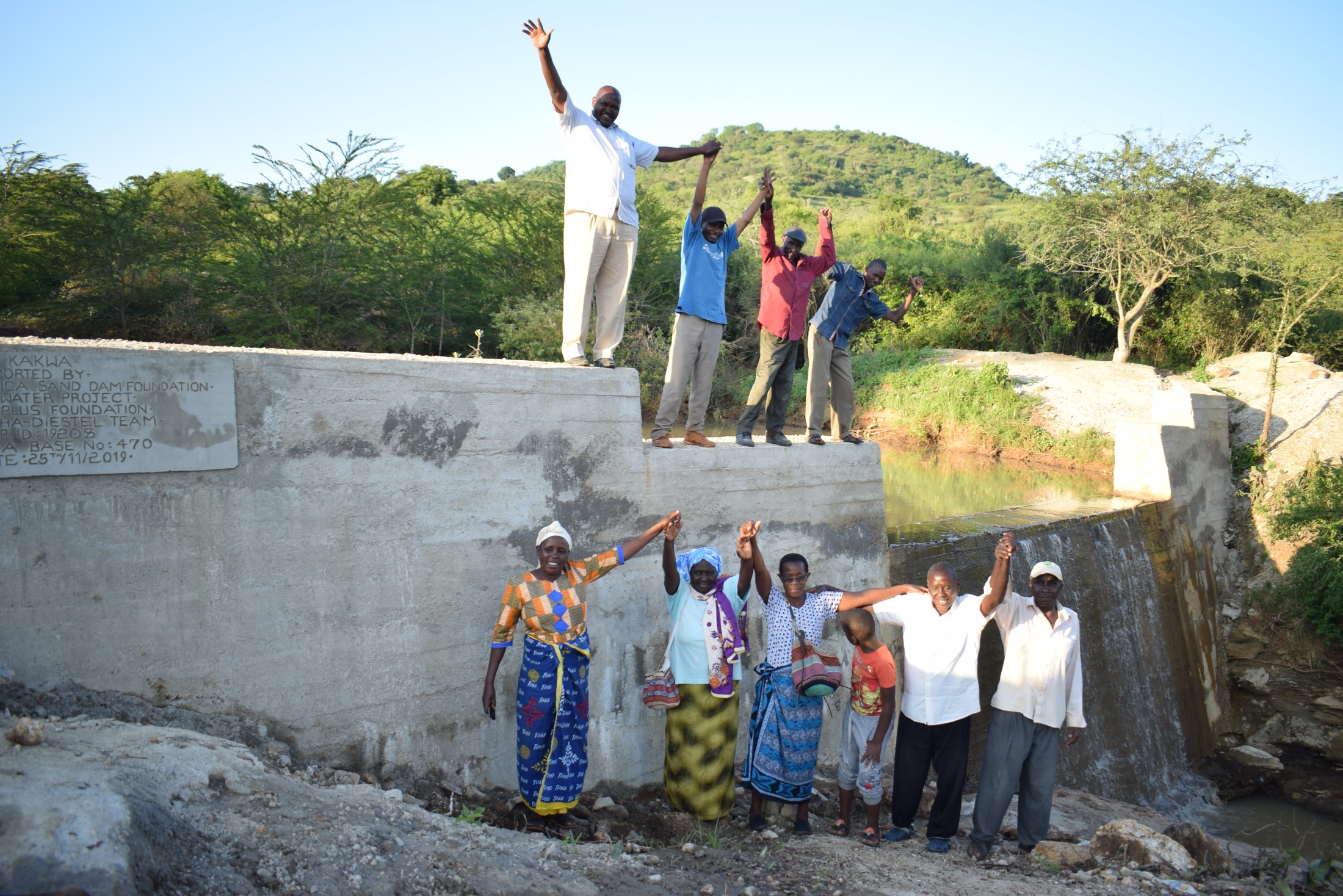
Kakwa Self-Help Group members celebrate their completed sand dam in 2019.
Increasing accessibility to water year-round allows people more choices in how they can spend their time that they would otherwise spend traveling long distances searching for water during the dry season.
For children, and especially girls, the time they gain in having a water source closer to home means more time to pursue an education, play with their agemates, and dream about their future. Adults, and especially women, can allocate the time they gain to other, more productive activities, including domestic chores, child care, farming, running businesses, and other work.
“This project is a big boost to the water challenges in our village,” said Mama Kavinya, referring to her Kakwa Self-Help Group’s sand dam upon its completion in 2019.
“It will bring water close to our homesteads, thus reducing the distances covered in search of the valuable commodity. We are happy to have completed the project and for seeing the work of our hands yielding fruits in getting water. We will use the available water resources to improve on our agriculture and also cleanliness standards at the household levels.”
“We had a big water problem in our area,” said Mr. Nzunga, a member of the same self-help group as Mama Kavinya. “I used to have to walk for two kilometers in search of water, but after we constructed the sand dam and well, I just have to walk for 200 meters to fetch water,” he said.
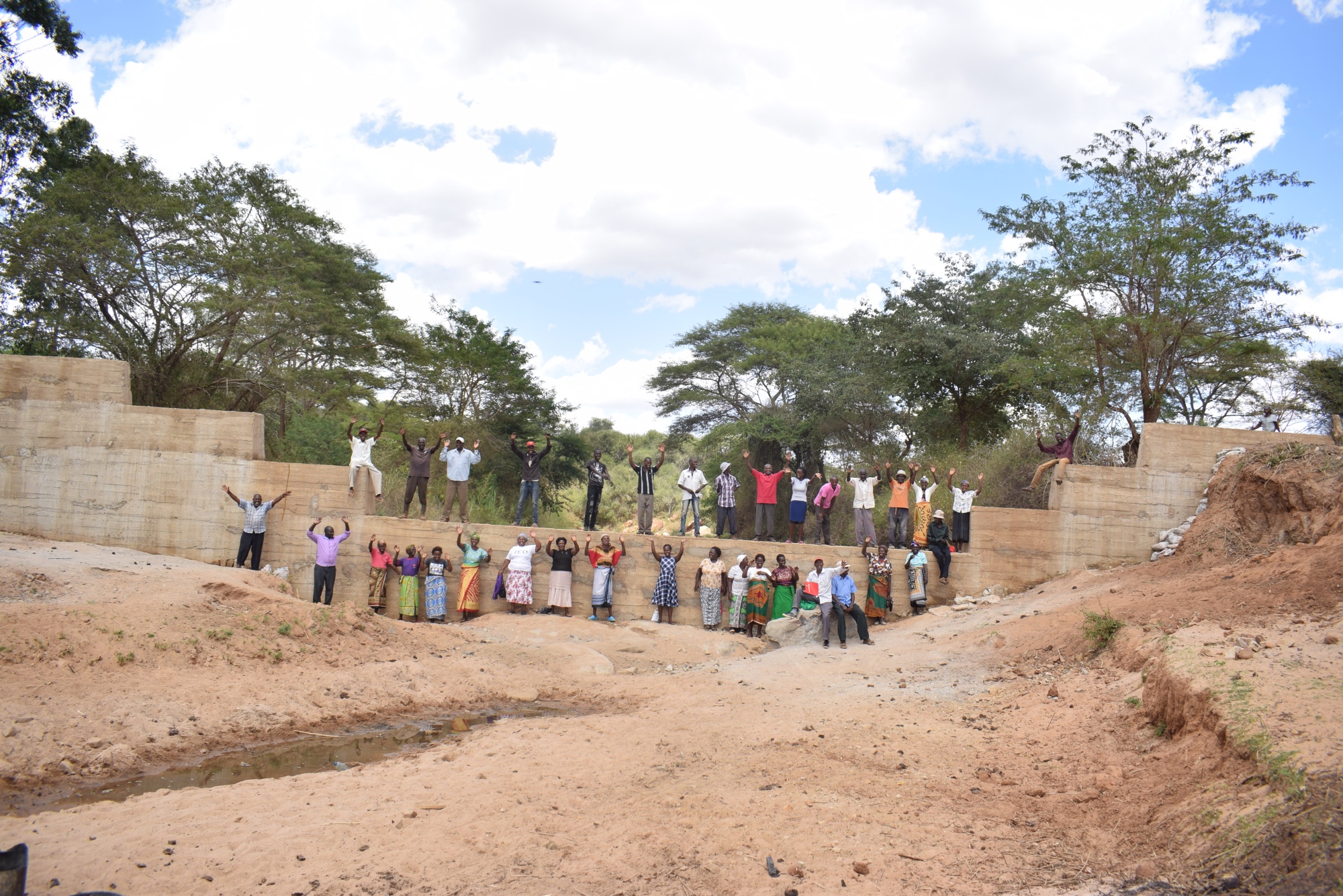
Muka Self-Help Group members pose at their newly completed sand dam in Muluti, Kenya in 2019.
For many, like Jeniffer Kiminza, also a member of the Kakwa Self-Help Group that to date has built three sand dams and two wells in the Kithumba area, they choose to harness the dam’s harvested water to pursue agribusiness and other water-dependent development projects.
“Due to inadequate rains in this season, I relied heavily on the water from the sand dam project. I managed to irrigate my farm, where I had planted maize and vegetables. I have earned an income of KES 45,000 from the proceeds of my farm. Thanks to this project, I can meet the needs of my family and make a living,” she said proudly.
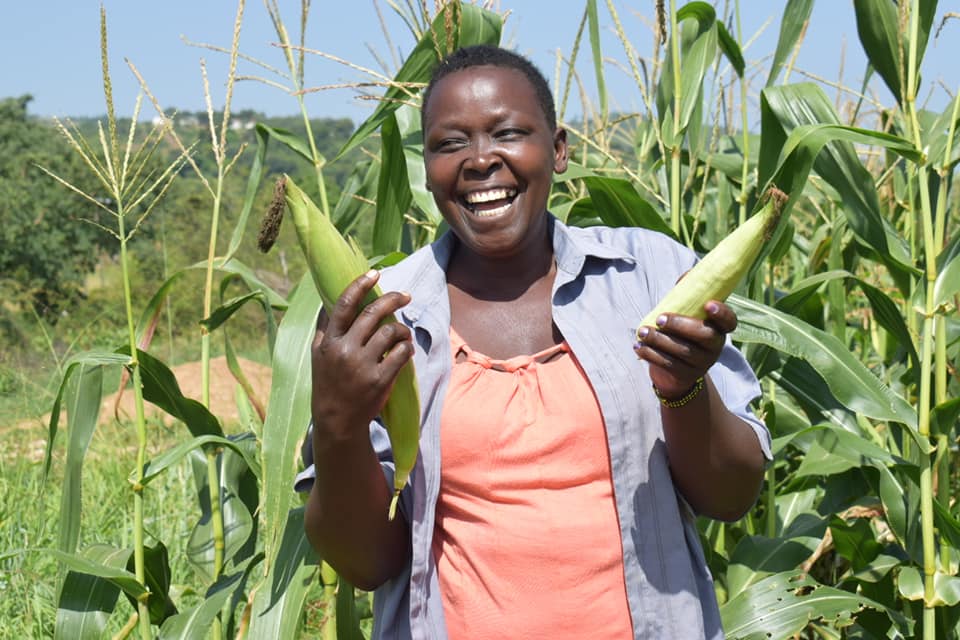
Jeniffer Kiminza holds up maize from her farm.
Another member of the same self-help group, Matthew Mulandi, shared how he has seen his community transform since the completion of their sand dams and wells.
“A lot has changed since the installation of this water point. We have plenty of water to plant trees and vegetables such as kales, spinach, onions, and tomatoes for domestic use at our homes and sale. Generally, farming projects have intensified thanks to this water project. Community members no longer have to walk for long distances to fetch water. This has enabled them to save more time to engage in other income-generating activities,” Matthew said.
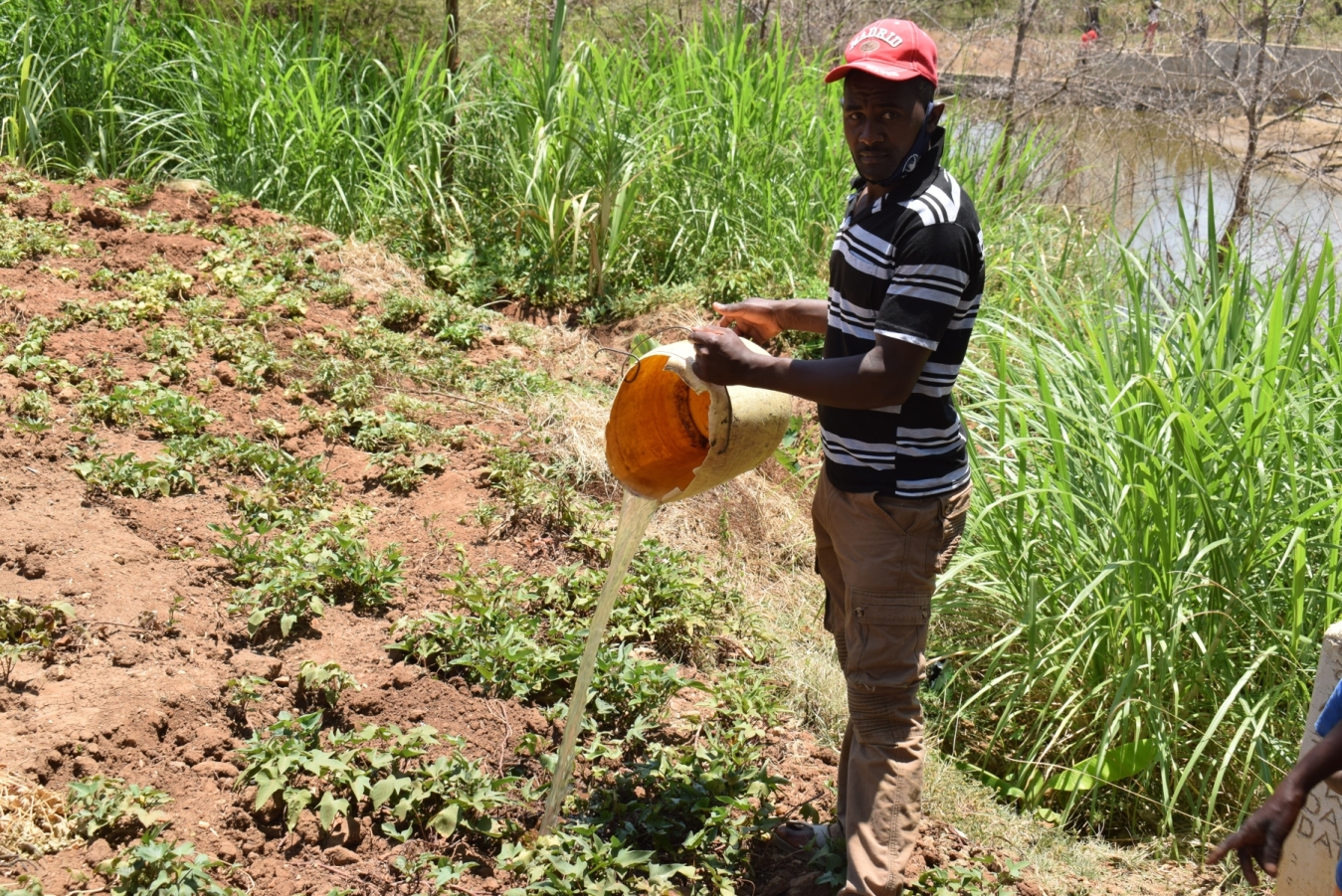
Matthew watering his farm with water from the sand dam.
For communities in southeast Kenya, these sand dams and connected wells are helping to turn back the clock on desertified landscapes and once-reliable rivers. Though restoration naturally focuses on bringing back what once was, these communities are looking far into the future thanks to the opportunities that lie within each grain of sand behind their sand dam walls.
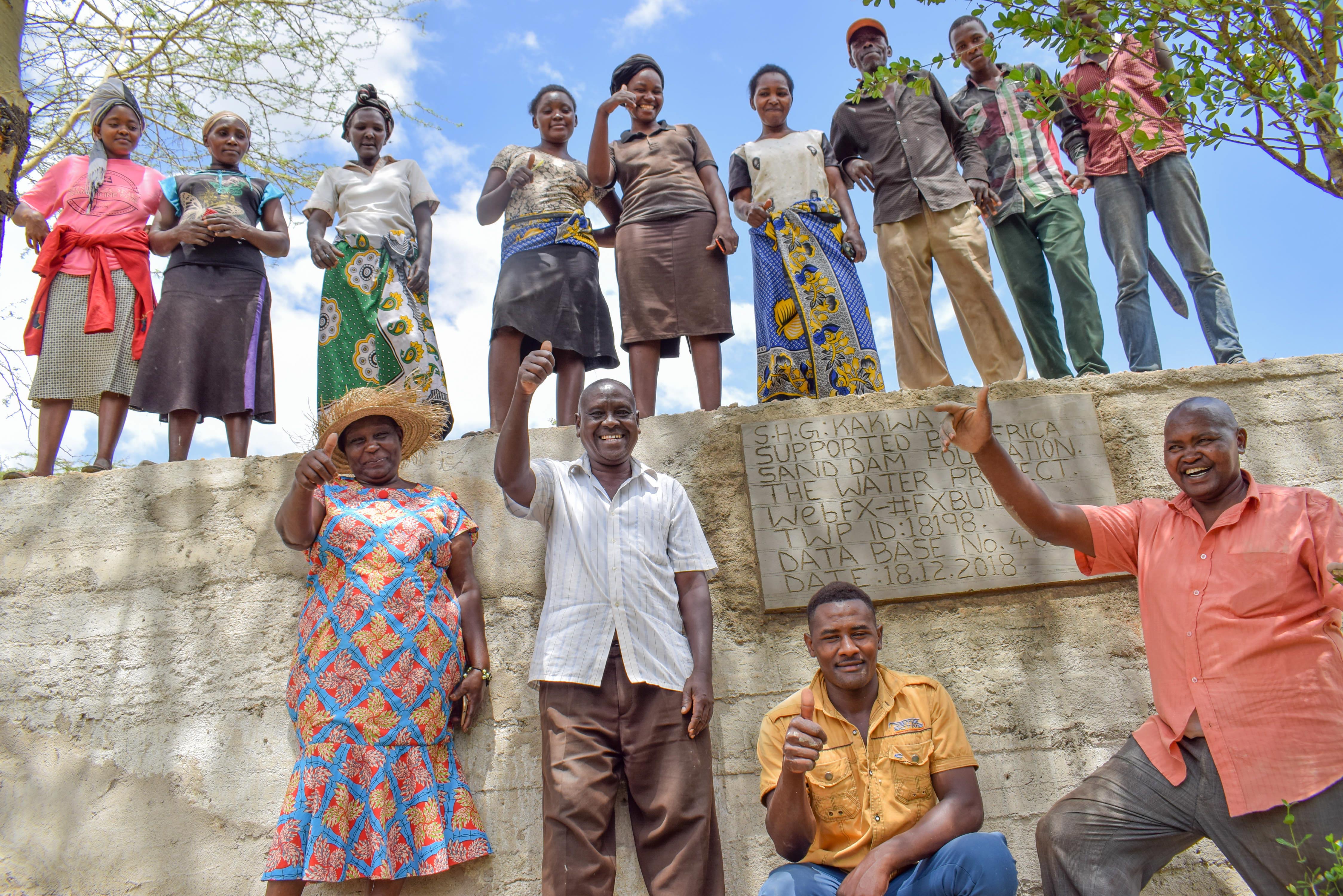
Celebrating a completed sand dam.
Tweet